There is no question that having a Windows operating system on your computer decreases productivity and compromises safety of your private information.
For preppers that purchase items online, store manuals, connect with other survivors, or have more computer resources available during a crisis, switching to Linux may be one of a kind resource.
Even if you stay as far away from computer maintenance as possible, rest assured that once you switch to Linux, you will never want or need to go back to Windows.
What Is Linux?
Before launching into the details about converting to Linux, it is important to understand what you are converting to. In this case, Linux actually refers to hundreds of different operating systems, or “distros” that all do basically the same thing with a core of common programs. Since Linux is “open architecture”, programmers can make changes to any version of Linux and come up with a new distro (distro = a computer software distribution package).
For example, there are several distros of Puppy, Debian, Ubuntu, and Slackware. Unlike Windows, you are not stuck with one version that can only be replaced when Microsoft decides to upgrade. Instead, you can install a different version of Linux or see if the developer has a new variant available in the testing stage. This includes “lite” versions that are exclusively designed to run on a USB drive.
One of the nicest things about Linux is that you can run multiple operating systems on the same computer. Therefore, if you install one version and are not happy with it, you can easily install others and test them out. Or, better yet, just install Linux Live versions to DVD or USB, and test them directly without installing to your hard drive. When it comes to freedom of choice and customization, there is truly nothing like working with Linux!
Linux vs. Mac
For some people, there is no computer like a Mac. While these computers offer more security than Windows based systems, they are also far more expensive.
For those whose budget does not allow for buying Mac computers, switching to Linux will offer many advantages. At the very least, you won’t have to buy a whole new computer or find yourself at the mercy of a relatively limited number of repair technicians. If you are running Linux and have a hardware failure, you can still go back to the manufacturer and have them fix it.
Most manufacturers will consider you still within the bounds of the warranty if you leave a portion of the hard drive with the original OS on it.
Advantages
- Many Linux distros are Free
- Graphical Interface is Appealing and Uncluttered
- Double or Triple Computer Processing Speed
- Very Little or No Need for Security Software
- Software that runs under Linux is free, more stable, and packed with the latest features you would find in Windows or Mac program suites
- Unparalleled web and personal security
- Linux does not require defragging, registry scanning, or other forms of maintenance.
The Facts about Linux Disadvantages
Today, many people still think of Linux as a complicated operating system that has no graphical user interface, and very few programs that can be used with it.
Contrary to these opinions, Linux is one of the easiest operating systems to work with. Even “Lite” Linux versions that run on USB drives have a fully operational graphical interface and a full battery of programs to meet all your needs. No matter whether you are interested in image editing, map plotting, access to satellites imagery, composing music, or keeping your home business books, Linux can meet your needs far better and at less cost than Windows or Mac based operating systems.
You will also find many people that claim Linux cannot run on a desktop, laptop, or tablet. To the contrary, there are dozens of Linux distros that can run on a home computer. In fact, you will find that Linux actually requires less processor power, less memory, and fewer resources to get the same job done using other operating systems.
It is also false to say that you cannot run printers and other devices using the Linux operating system just because the device doesn’t say Linux compatible. For example, I have bought dozens of mice over the years (including a really awesome red race car design) that run perfectly right out of the box.
In fact, I don’t even have to wait for Windows to look for the right driver because as soon as Linux boots, the driver is already in place. No matter whether you are hooking up printers, scanners, graphing tablets, or other devices, there is more than likely a compatible software driver in the repository for your Linux distro.
Case in point: The computer I am writing this article on has a 1.66 GHZ CPU, 1 GB of memory, and a 160 GB hard drive. Under Windows 7, this computer takes about 15 minutes just to get past all the security programs and assorted downloads. Forget about running anything along with the browser. Even without going online, most programs take 5 – 20 minutes to load.
Now… under Mageia 4.1 (which has its roots in Mandrake/Mandriva Linux), I am running, right now, (see screenshot) LibreOffice Writer (with 2 documents open), Firefox (with about 15 tabs open), Thunderbird Mailer (which is scanning 3 email accounts), Skype, GIMP (the free equivalent of Photoshop), and IceApe Composer (for designing web pages). Under Windows 7 with this computer, I could not load these types of programs, let alone use all of them without the computer freezing up.
Finally, those who don’t know much about Linux claim that you cannot get any good or “easy to use” software for the Linux environment. For example, they won’t tell you about the LibreOffice suite which does everything the Microsoft Office suite does. This includes generating Powerpoint files, creating .docx files, spreadsheeting, and graphing.
In addition, LibreOffice will also export your files to .PDF without having to spend a fortune on Adobe products. In a similar way GIMP has all the newest features that you would expect to find in Photoshop.
Keeping Your Old Programs
For those that simply cannot give up their Windows based software, there is good news. With Linux, all you need to do is install a program called WINE. This program creates a separate section on your hard drive that acts just enough like the Windows operating system. When you click on a .exe file, WINE will activate and install the program.
You can create desktop icons for your favorite programs, and then just click on those without ever having to go near Windows. I must admit that once you become accustomed to Linux based programs, you will very rarely use the old programs that you thought you couldn’t do without. That being said, while you are in that transition zone, it is nice to have a sense of safety while learning a new operating system.
Back Up Your Files
Even though you may not be planning to switch to Linux, it is always important to keep current backups of your files. If you are converting to Linux, it is very important to save all of your files. Once the Windows OS is gone, all the files you created will also be erased. While there are retrieval programs that may be of some help, never depend on that when it is much faster and easier to make a full backup.
Contrary to popular belief, you don’t have to save operating system settings or other things that really won’t matter if you upgrade or switch to a new system. In fact, for several decades, I have gotten along just fine with the following method:
- create a single folder on the desktop (example: “myfiles”. Everything you save will go into the “myfiles” folder, or a subfolder within. Make as many subfolders as you need to stay organized.
- Once you are ready to backup the computer, export browser bookmarks and email files, and place them in the “myfiles” folder.
- From there, simply use your DVD burner, USB drive, or even Google Drive to save the “myfiles” folder and all of its subfolders. You can also .zip them into a single file for easier transport.
- Verify that the files saved to removable media are in good condition and can be opened. While there are repair programs for .zip and other files, they are not perfect and can still result in lost data. Finding out now if all your files are accessible and present will save a lot of trouble later on.
- Once your files are backed up and verified, go ahead and delete everything you won’t be using. In order to avoid duplicates in the next backup, simply create an “old” or “integrated” folder that will not be included in future backups. Remember, under Linux you will never need to defrag the drive or free up space by running a separate program. Just empty the trash, and all of the previously used space will be restored.
Passwords
If you have a number of favorite websites that you visit on a routine basis, chances are you also have an account on those servers. Unless you enjoy putting passwords in each time you visit these websites, then you probably have your browser set to save them. Needless to say – this also makes it much easier to forget them.
You can try backing up passwords and cookies from your current browser, and then take the chance of storing beacons and other tracking software that presents a problem to you. Rather than take that path, it is truly easier to write down all your passwords and login information in a notebook, and then put that notebook in a lockbox.
No matter how many security people advise you to never write down a password, you are the one that will be stuck without access to your accounts if you can’t remember this type of information.Here are some other advantages to keeping hard copy of all your passwords:
- you can vary them, and make them as complex as you want without worrying about memory issues
- if your computer crashes, regardless of the OS, you won’t have to worry about not being able to log in to important accounts
- this is also the perfect time to record any passwords associated with non-web based files and access points in your computer. When it comes to Linux, you will need to remember your administrative account information and also your routine user info.
Hardware Information
Before converting to Linux it is very important to know the names and manufacturers of some key parts of your computer. These parts include:
- the name, ID and version of the graphics card
- BIOS type and version
- CPU type and version
- monitor type and version
- modem/wireless antenna type and version
- anything else that you can find in the hardware profiles for Windows. If possible print them out so that you have all the information on hand.
- If you really want to take a shortcut on this section, simply use a Linux Live on DVD installation and test it out before you change the OS.
These steps are especially important if you are using Toshiba, HP, or Dell systems. Even though Linux installation programs will get the right drivers most of the time, these brands tend to be a bit tricky because of the proprietary nature of the trackers and hard drive configurations installed on the system. In a similar way, beware of Chromebooks, small netbooks, and other computers that have certain routines in their BIOS that discourage changes to the operating system.
Even if your system has some features that make it harder to upgrade to Linux, you can always look in the forums dedicated to the variant you are interested in using. You will usually find someone there that has created a fix for any problems that may come up, as well as others that will help you in real time with new issues.
Unlike Windows based forums, you will find that Linux forums are filled with intelligent programmers that love the open architecture of Linux, and are more than happy to work on these problems and solve them.
CLICK HERE to find out how to protect your computer and other electric devices from the devastating effect of an EMP.
It should also be noted that relatively OS-free computers similar to ChromeBooks will soon be on the market. These computers simply connect to a remote computer that has the operating system stored there, plus any programs that you may need.
Since the BIOS on these computers is not designed to run with a disk based operating system, you will not be able to get away from Windows, or whatever your new computer happens to be hooked up to. While ChromeBooks currently allow you to use Linux, the original OS must still boot before you can use Linux.
Just as a side note, I highly recommend storing older computer parts to match your current system. Also make sure that you know how to build a desktop system from the bottom up in order to get around this problem. In fact,if you are concerned about an EMP attack, storing extra components in a Faraday cage may be of some help.
Understanding Desktop Environments in Linux
Unlike Windows, you can choose to have a graphical interface, or a plain text one. While seasoned Linux users may still prefer the text based entry system, most newbies will certainly appreciate being able to “point and click” using a graphical interface. Currently, there are three main desktop environments to choose from. Each basically does the same job, but they give you access to different programs and levels of functionality.
Here are the three most popular desktop environments. Once you know how to use them on one variant of Linux, it will be the same on all variants. This makes it very easy to go from one variant to another without having to relearn everything all over again.
- KDE – is the most popular desktop environment. It is lightweight, easy to work with, and can be used with many different programs.
- GNOME – up until a few years ago, GNOME was as popular as KDE. Most Linux distros gave you a choice to use the GNOME desktop during installation. Personally, I’ve always preferred GNOME because the graphics are smoother looking. That being said, even I have to admit that GNOME does not move as fast, and it also has fewer programs to choose from. Once I got used to KDE, I can truly say I’ve never had an urge to go back to GNOME.
- Cinnamon – is a fairly new desktop environment that is supposed to offer the best of KDE, GNOME, and a few other desktops. I have not personally tried Cinnamon yet, but expect that it will deliver the same quality that marks it as part of the Linux family.
Choosing a Linux Distro
Before you choose download a distro or order a disk online, it is important to make sure that you know what you want the OS to do. For example, if you are security conscious, then choosing a Mandrake variant such as Mageia will be a good choice. If you are ultra-concerned about privacy online, then try using Tails just for web based work. Individuals looking for a stable, popular, and safe OS, then Mint and CentOS are excellent choices.
For those who want popular over security, then RedHat, Ubuntu, and Debian will make excellent choices. Bear in mind that when it comes to security from viruses and malware, even the “weakest” Linux distro will be far better than Windows.
In order to learn about all of the available Linux distros, you can visit http://distrowatch.com/search.php. This site also gives you all the latest news from the Linux world, and can help you find out when your particular distro has an official upgrade. Needless to say, if you find yourself drawn to two, or even 3 different distros, feel free to install each one on a DVD and see how it works in real time.
If you are still drawn to different distros, simply install them all on the hard drive, and then use each one as you see fit. Once you get used to a dual boot environment, you are sure to enjoy exploring even more options. Fortunately, when you install Linux, you will not need to buy expensive hard drive management software. The installer for each version of Linux will give you the option to create a dual boot environment and then do the job for you.
Where to Get Your Linux Distro
Typically, you can install Linux for free by going to the developers website and downloading the latest version of the OS. From there, simply burn it to a DVD with the option to boot from the DVD. You can also do the same thing with a USB drive as long as you use Unetbootin to make the USB bootable. Unetbootin will also unpack and install the necessary files from the main archive that you downloaded from the developer site.
If you are not interested in burning your own DVDs and USBs, you can usually buy them from the developer site and have them mailed to you.
For those who are especially budget conscious, there are many reputable distributors on Ebay that will sell you the disks for well under $10.00, including shipping and handling. Just be sure to let the seller know which desktop environment you want so that they can send you the right disks.
Video first seen on PC World Videos
Managing Upgrades
As with any other software, there are bound to be times when you will need to upgrade the operating system. Unless you are upgrading to a new version, the OS will upgrade on its own or prompt you to do the upgrades manually. Unlike Windows, you will find that the Linux upgrades are very fast and will not interfere with other things you may be doing on the computer.
In addition, I usually upgrade my Linux versions every two years, or about six months after a stable version is released. During the time after an official version is released, I make it a point to read the forums to find out what kind of problems are coming up, and then wait for any fixes that might affect my particular computer.
Fortunately, I have always been as happy with the new versions as I have previous ones, and have never experienced a situation where my computer ran slower or had problems because of too many resources being gobbled up by the OS. Let’s just say i would not dare upgrade this computer to Windows 8 given how slowly it works under 7.0!
Installing
Installing Linux is a simple as booting with DVD or USB drive containing the OS files. You will be asked some basic questions about your system such as keyboard type, time zone, and language choice. Next, the system will ask you how you want the new OS installed. You can choose to leave Windows on the computer, and allocate a smaller space to it, or simply use the whole disk for Linux.
Bear in mind that Windows 8 will try to uninstall older versions of Linux as soon as you run Windows again. However the latest versions of Linux can be safely dual booted with Windows 8 (if you really want to do such a thing).
Once Linux is installed, you can set up your WIFI or other internet networks, install printers, and any other software that may be of interest to you. After you see all of the options available in each category of software, you will be truly amazed. All of the programs you see on your listing are free and ready to install as soon click on them and approve the installation.
As you continue to work with Linux, remember to check the software installer from time to time and refresh it to see if new versions of your favorite programs are available. This is especially important for internet browsers, since they tend to need upgrading very quickly.
Troubleshooting
For the most part, Linux will run without freezing, losing data, or causing other problems. There are no maintenance programs to run and very few things you can do as a user to cause the system to crash.
In 10 years of operating various types of Linux, the only problem I have ever run into was with the database for the after-installation software installer. You won’t even know this problem exists until the next time you want to install new programs on the system.
Fortunately, the fix for that problem is very easy and can be done with few, if any, technical skills.
Linux Emergency Tools
What happens when your hard drive crashes, or some other catastrophe causes you to lose all access to the operating system and programs?
Many people stay with Windows because they believe it is worthwhile to spend hundreds of dollars on a repair person that can help them out. By contrast, very few computer repair shops will take on a computer that runs on Linux.
Fortunately, you can solve just about any problem on Linux AND Windows based systems using Linux based tools. All you will need to do is install Kali or Parted Magic on a USB drive. From there, you can use all kinds of tools such as PhotoRec to retrieve lost files.
There are also several routines you can use to probe the hard drive and other hardware for malfunctions. Kali also has a number of forensics routines that can be used to help you find out why your online networks are running slow, as well as diagnose other problems that reduce efficiency.
In the modern world, there is no such thing as an acceptable threat level for your valuable computer information. The vast majority of people put their identity and private information at risk every day because they continue to use the Windows OS and all of the expensive security suites designed to overcome its limitations.
If you are serious about surviving large scale computer attacks that will destroy computers running Windows, then you will be well served by converting to Linux. Why not save money and protect your computer using the best tools available for these times?
For those considering making the switch to Linux – please feel free to ask questions. I am more than happy to help you along, or direct you to sources that can be of help!
This article has been written by Carmela Tyrell for Survivopedia.
[yasr_visitor_votes]


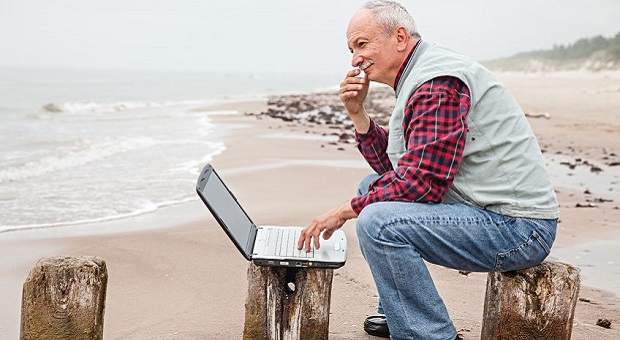
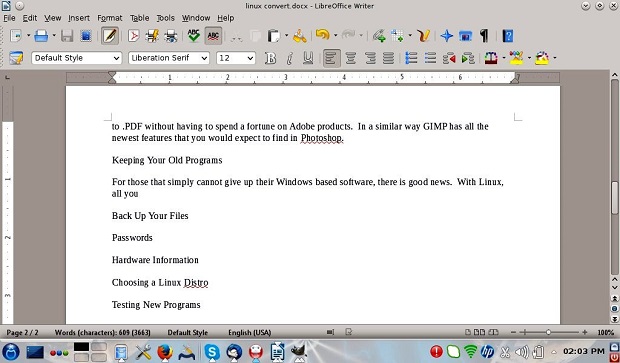
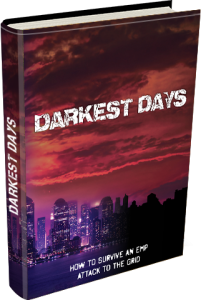
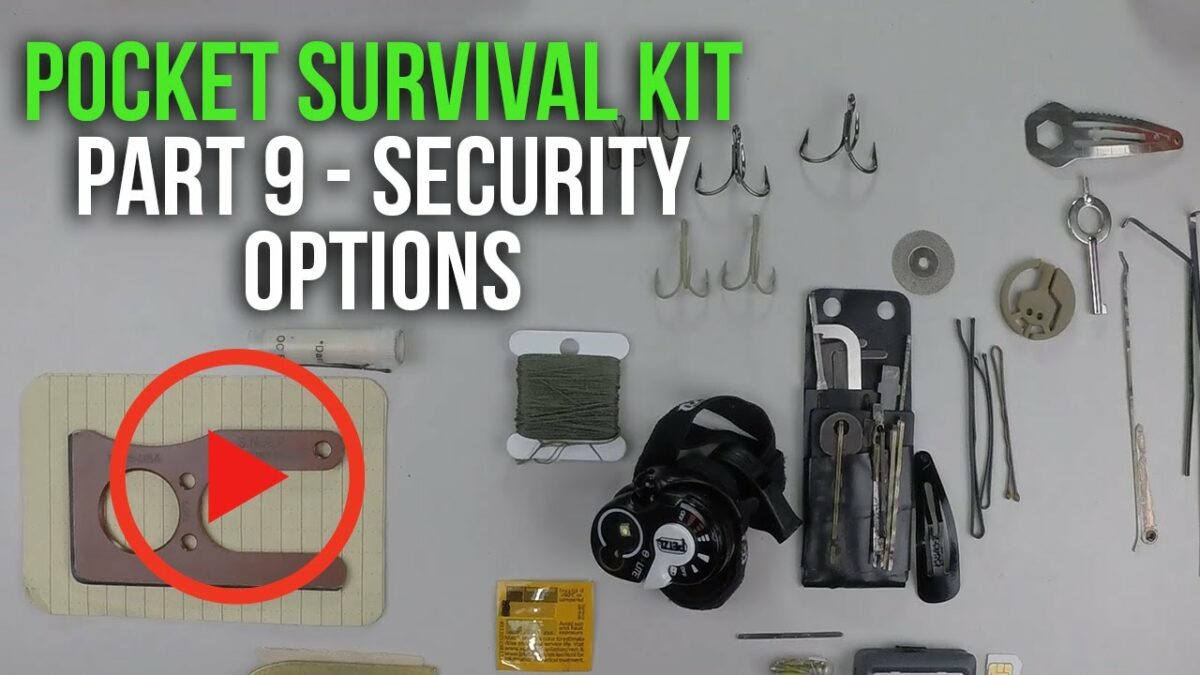

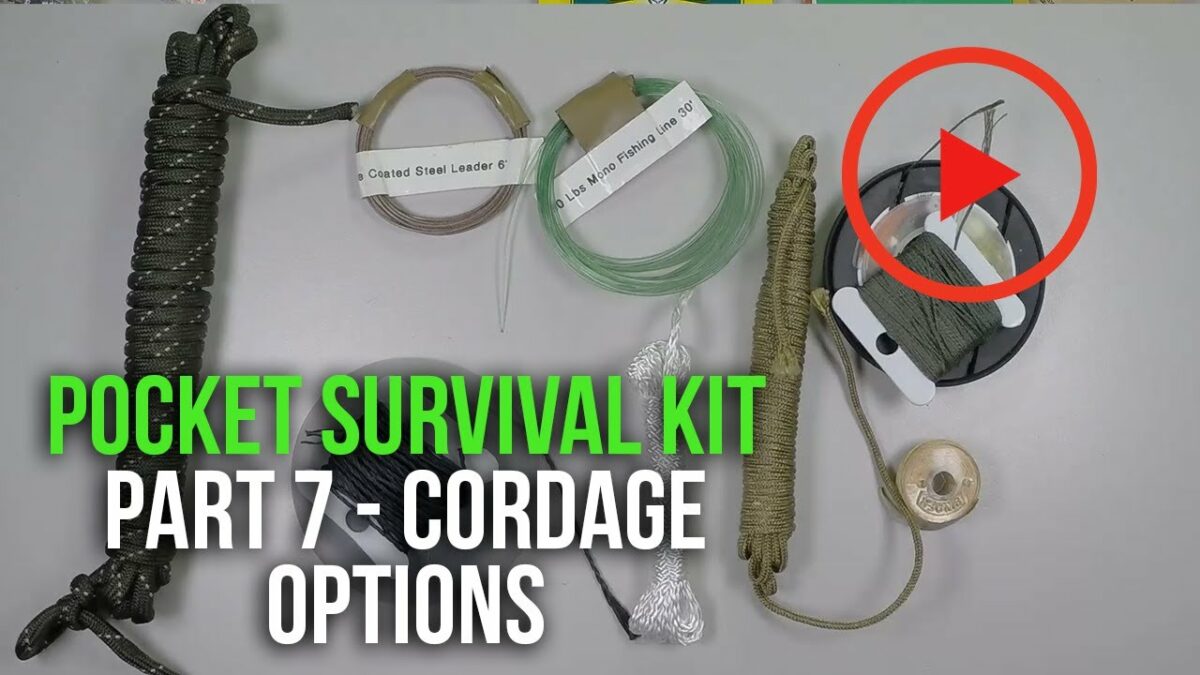
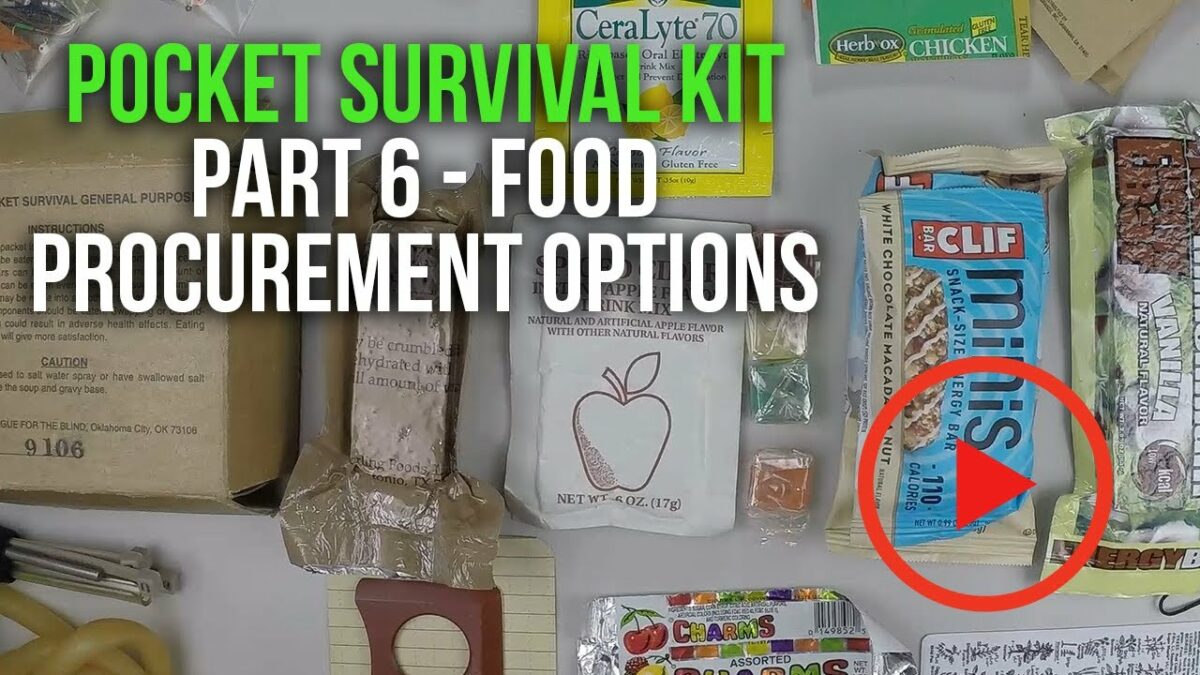


mrmom7837 | March 26, 2015
|
Great article. I have played with many versions in the past. I would and do personally recommend Zorin OS or Mint versions (both based off of Ubuntu) for those new to Linux. Zorin OS is my personal go to and my recommendation for newer people. It comes pre-loaded with many options Windows users are used to and it is designed to look like Windows 7. This will really help those who are new. Remember you can also run Linux in “Live” mode which will run it off of the CD or DVD you made so you can test different versions before you install one. FYI it will be dramatically slower from the DVD drive, once installed it will be much faster. Hope this helps.
Pingback:Basic Guide To A Secure Linux USB Drive | Survival skills, survival guns, survival guide | April 19, 2015
|
Pingback:Basic Guide To A Secure Linux USB Drive | The Prepper Dome | April 24, 2015
|
fireboy | January 19, 2016
|
Thank you Carmela Tyrell for taking the time to tell all about the good news of Linux! Forgive me but I did not read all your article because I wanted to give my 2 cents on what I learned in 30+ years and I’m short on time.
I dumped windowz 98SE “Blue Screen of Death” for Red Hat Linux 30+ years ago and have never looked back! I don’t pay the so called Microsoft tax a $100 bucks to stay upgraded to the next version, before they drop the one I’m using, what a joke. But I do donate to several Linux foundations, and to the Linux distributions I use. Right now I’m using “Kubuntu”, it’s a flavor from “Ubuntu” and “KDE”. Don’t let all the crazy sounding names throw ya, just look them up with Google/ DuckDuckGo and you’ll get by just fine.
Lots of people stick their nose in the air when Linux is mentioned. But, think about this: nearly all machine ran by software, and 99.9% of Android phones, and the biggest super computers are run on Linux of some kind.
Just a few of the “Big Benefits” in using Linux:
– First and downloding Apple and windowz don’t have this all important No. 1 luxury of having millions and millions of software programmers looking at their code to see if your being spied on where as Linux leads the world for hunting down the NSA dirty bunch! Because Linux software is free and open source any one who can read code can check it out. I’m not talking about getting hacked now, I’m talking about being spied on in the code. Most can be hacked on any system, that’s why you should be behind a firewall and a secure router.
– Cost, What’s to compare to free when MS ask $100 for their software!
– I try to pick a distro that is “LTS”, Long Term Service meaning: they maintain that version for 5 years. And at the same time they are still coming out with new versions, but that don’t mean they maintain all the new versions for 5 years, just the “LTS” versions. So you may see a distro version spelled out like this “Kubuntu 14.04 LTD”
– Downloading a distro of Linux, at the download site they give complete instructions on downloading and installing.
– Lots and lots of help is available on the Internet, You’ll find 95% answer to problems on the Net or in a forums.
– Kubuntu looks a lot like windowz, but that’s not why I use it, it’ a very good distro with LTS. I’ve use Kubuntu off and on for about eight years now, right after it came out I believe. KDE is the desktop in Kubuntu, and KDE gives it that windowz look.
– Learning Linux is like anything else that’s worth having, you’ll have to put in the time to learn it so you can own it. These days the desktop system or so much better than they once were and that makes a big difference.
– Having two computers be it laptops or pc or both, putting Linux on one and keeping your old system around until you get Linux under your wing is the better way to learn. One can run a live CD/DVD of Linux on a single computer and learn a lot to get started. When your ready you can install you Linux distro on a single hard drive along side windowz. You will have to spend the time to learn how to do that or you will come away feeling beaten down and that’s the last thing you want! Learn how to put the distro you want to try on a USB stick and boot from the stick will help you learn a lot to making it in Linux. One could load up ten different distros on ten USB sticks and spend time checking them all out to see what they like.
Here’s a site that will help you do just that: Boot and run Linux from a USB flash memory stick
http://www.pendrivelinux.com/
and
How To Carry Any Operating System In Your Pocket, from PC World Magazine
Create a Boot-able Linux Flash Drive in Three Easy Steps
http://www.pcworld.com/article/249870/create_a_bootable_linux_flash_drive_in_three_easy_steps.html
Some key Linux URL’s::
Top Linux Distros for 2016
https://linuxdistros.org/top-linux-distros-for-2016/
Kubuntu Linux, Download the Kubuntu
http://www.kubuntu.org/getkubuntu/
Here you can get help: Kubuntu Forum
https://www.kubuntuforums.net/forum.php?s=eef9043cd789435e687866ccd0c2b351
Installing Debian via the Internet(here’s a must see page on whats available in Debian). Ubuntu and all the Ubuntu distros are children of Debian! You’ll have to pick your distro on the type of system you have, an amd64 or a i386 or whatever you have determines which distribution of Debian or the distribution you finnaly download to install!
https://www.debian.org/distrib/netinst
Here you can get help: LinuxQuestions.org
http://www.linuxquestions.org/
I hope I was able to add to Carmela Tyrell’s fine article rather than distract from!
Bob | January 25, 2016
|
Thanks this is really helpfull i will do this